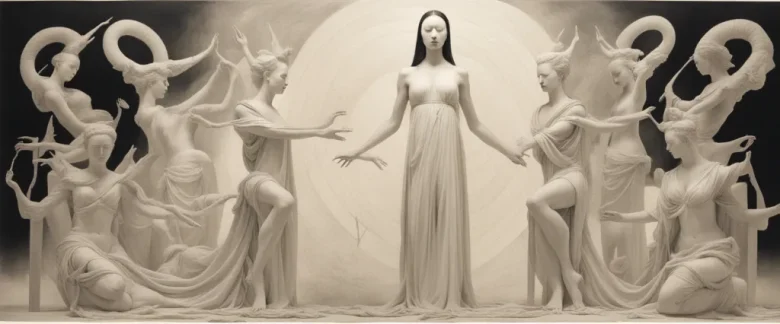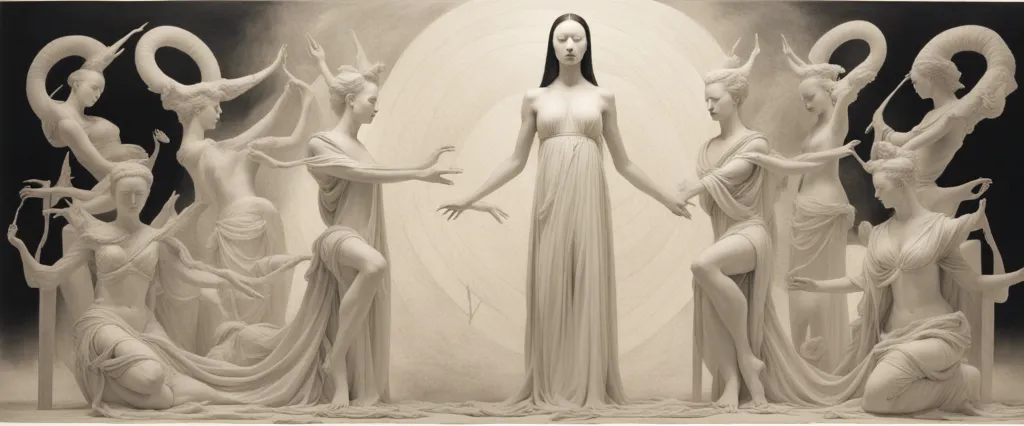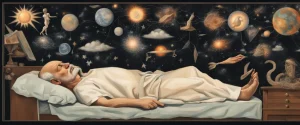In “Goddesses in Everywoman” by Jean Shinoda Bolen, the author — a Jungian analyst and feminist — explores the archetypal goddesses that reside within every woman. Drawing from Greek mythology, Bolen presents a compelling framework through which to understand and embrace the diverse aspects of the feminine psyche. By delving into the realms of Athena, Artemis, Hestia, Hera, Demeter, Persephone, Aphrodite, and Eos, Bolen uncovers profound insights into women’s personalities and offers valuable guidance for personal growth and self-discovery. Through her expertise in psychology and mythology, Jean Shinoda Bolen provides a transformative perspective on the universal feminine experience.
Chapter 1: The Power of the Goddesses
Chapter 1: The Power of the Goddesses in Goddesses in Everywoman by Jean Shinoda Bolen introduces readers to the concept of archetypal goddesses and their influence on the lives of women. Bolen emphasizes that these goddesses are not necessarily literal deities; instead, they represent timeless patterns of behaviors and qualities that can manifest in individuals.
The chapter starts with an exploration of the psychological concept of the archetype, explaining that archetypes are universal patterns of energy that exist within the collective unconscious of humanity. Bolen asserts that women tend to embody specific goddess archetypes to varying degrees throughout their lives. She identifies seven core goddesses that she further explores in the book: Athena, Artemis, Hera, Demeter, Persephone, Aphrodite, and Hestia.
Each goddess represents different aspects of the female psyche and experience. Athena symbolizes the wise strategy, Artemis is the independent and self-sufficient woman, Hera represents the marriage and commitment-oriented side, Demeter embodies the nurturing and motherly qualities, Persephone stands for the young and innocent, Aphrodite embodies erotic and romantic love, and Hestia represents the home and hearth.
Bolen emphasizes that understanding these goddess archetypes can help women better understand themselves and their personal journeys. By recognizing which goddess is dominant or repressed within themselves, women can uncover their strengths, weaknesses, and potential sources of growth. Bolen argues that embracing and integrating different aspects of these goddesses can empower women by providing them with a broader range of choices and perspectives in life.
Overall, Chapter 1 sets the foundation for the exploration of goddess archetypes in the book, highlighting their significance in shaping women’s identities and offering readers an opportunity for self-reflection and personal growth.
Chapter 2: Artemis: Independence and Autonomy
Chapter 2 of “Goddesses in Everywoman” by Jean Shinoda Bolen focuses on Artemis, the Greek goddess of the hunt and the wild. This chapter explores the archetypal qualities associated with Artemis and how they manifest in women.
Artemis embodies independence and autonomy, as she is portrayed as a self-reliant goddess who rejects traditional female roles and expectations. She is often depicted as a youthful and athletic huntress, untouched by romantic relationships and dedicated to her own pursuits. By rejecting marriage, Artemis symbolizes the freedom to chart her own course and define her own identity.
The chapter explores how the Artemis archetype manifests in various life stages of women. In young girls, the influence of Artemis is seen in their love for adventure, the outdoors, and their desire for independence and self-sufficiency. As women grow into adulthood, the Artemis archetype can manifest in their need for freedom, their ability to set boundaries, and their desire to pursue personal goals and career achievements.
However, Bolen also discusses the potential pitfalls of the Artemis archetype. Women identifying strongly with Artemis may struggle with intimacy and vulnerability, as Artemis remains emotionally guarded and avoids romantic entanglements. The chapter highlights the importance of balancing the need for independence with the need for connection and love.
Overall, Chapter 2 of “Goddesses in Everywoman” explores the archetypal qualities of Artemis and how they shape the lives, aspirations, and challenges of women who embody this powerful archetype.
Chapter 3: Hera: Marriage and Power
Chapter 3 of the book “Goddesses in Everywoman” by Jean Shinoda Bolen delves into the archetype of Hera, the Greek goddess of marriage and power. This chapter explores the various aspects of Hera’s character and the influence she has on women’s lives.
Hera is portrayed as the archetype of the faithful wife and partner. She symbolizes commitment, loyalty, and domesticity. However, she is also known for her fierce jealousy and possessiveness, particularly toward her husband Zeus, who frequently strays from their marriage bed. This duality in Hera’s nature reflects the challenges many women face in their own relationships.
Bolen discusses how the Hera archetype plays out in real-life marriages. She argues that many women identify with Hera’s desire for a committed and loving relationship. They seek stability and security, often sacrificing their own needs and desires to maintain harmony in the marriage. However, this tendency to be overly accommodating can also lead to feelings of powerlessness and resentment.
The author emphasizes that it is important for women to recognize and balance both sides of the Hera archetype. They should acknowledge their longing for deep connections and commitment while also asserting their own power and individuality within the relationship.
Furthermore, Bolen explores the concept of power within the context of marriage. She suggests that women can find empowerment by acknowledging their own strengths and talents. By developing a sense of self-worth and setting boundaries, women can establish a healthier balance of power within their relationships.
Overall, Chapter 3 of “Goddesses in Everywoman” provides a nuanced understanding of Hera’s archetype and its impact on women’s lives, highlighting the need for balance and empowerment within marital relationships.
Chapter 4: Athena: Wisdom and Strategy
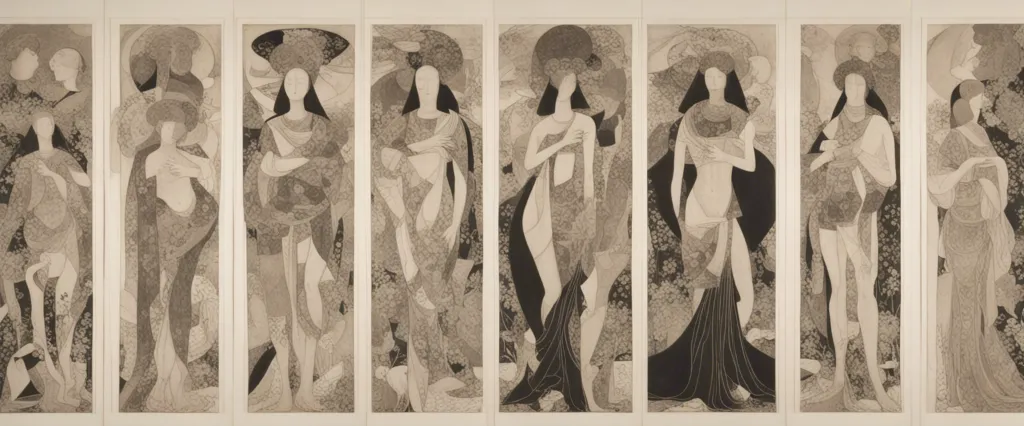
Chapter 4 of “Goddesses in Everywoman” by Jean Shinoda Bolen explores the archetype of Athena, the Greek goddess of wisdom and strategy. Known for her rationality, intelligence, and strategic thinking, Athena represents the powerful female mind.
Bolen introduces Athena as a goddess who emerges from the father alone, without a mother, symbolizing the idea of an independent intellect. She discusses how girls who identify with Athena often prefer the company of adults, exhibit precociousness in school, thrive in competitive environments, and value logic and reason over emotion. Athena types are also typically skilled problem solvers, displaying pragmatism and a penchant for finding innovative solutions.
The chapter also delves into the importance of societal expectations on Athena women, who are often pressured to reject their femininity for the sake of fitting into male-dominated fields. Bolen highlights how Athena types may struggle with balancing their personal desires with societal expectations, often feeling the need to prove themselves as equals in traditionally male territories.
Despite this internal conflict, Athena remains a symbol of strength for many women. As a goddess who was born fully grown, wearing armor and holding a spear, Athena symbolizes the power of the mind and its ability to protect oneself in a hostile world.
Bolen concludes the chapter by emphasizing the need for Athena women to embrace their femininity while also utilizing their intellectual abilities. She encourages them to develop a connection with their emotions, seek supportive relationships, and find healthy outlets for their competitiveness.
Overall, Chapter 4 of “Goddesses in Everywoman” explores the archetype of Athena, highlighting her intellectual prowess and the challenges faced by women who identify with this goddess. It encourages Athena types to embrace their femininity while still utilizing their intelligence, ultimately finding a balance between their natural inclinations and societal expectations.
Chapter 5: Aphrodite: Love and Beauty
Chapter 5 of “Goddesses in Everywoman” by Jean Shinoda Bolen delves into the archetype of Aphrodite, the Greek goddess of love and beauty. Aphrodite represents the feminine principle of love, sensuality, and the capacity to connect deeply with others. This archetype manifests in women who possess an innate ability to appreciate life’s beauty and have a natural inclination towards forming relationships and nurturing connections.
Bolen begins by exploring the different aspects of Aphrodite’s personality, which are apparent in various women. The “Hera Aphrodite” embodies the committed partner who seeks security and stability in a relationship. This aspect yearns for a deep emotional connection with a partner, often leading to jealousy and possessiveness. On the other hand, the “Demeter Aphrodite” represents the mothering, nurturing side that brings love and comfort to others. This aspect is selfless and empathetic, but may run the risk of sacrificing personal needs for the sake of others.
However, the “Artemis Aphrodite” is fiercely independent and values her freedom, often avoiding commitment in relationships. This aspect cherishes individuality and self-sufficiency, making it challenging for her to fully commit or rely on others. Lastly, the “Persephone Aphrodite” embodies the young and innocent aspect, characterized by vulnerability and naivety. This aspect is often pursued by older, powerful men, leaving her susceptible to exploitation.
Bolen emphasizes that these archetypes are not mutually exclusive and can coexist within the same woman, sometimes leading to internal conflicts. The key is to understand and integrate these aspects consciously, fostering self-awareness and growth. By exploring and accepting the multiplicity of Aphrodite within themselves, women can develop healthy relationships built on love, respect, and mutual understanding.
Chapter 6: Persephone: Intuition and Healing
Chapter 6 of “Goddesses in Everywoman” by Jean Shinoda Bolen focuses on the Greek goddess Persephone and her archetype as a symbol of intuition and healing. This chapter explores how the Persephone archetype manifests in different women’s lives and offers insights into understanding and harnessing intuition for personal growth.
Persephone, known as the daughter of Zeus and Demeter, was abducted by Hades, the god of the underworld, and became the Queen of the Underworld for a significant part of the year. This allowed her to develop a unique perspective, as she experienced both the light and dark aspects of life. In this way, Persephone epitomizes deep intuition and a connection to the underworld, which represents the unconscious mind.
The author explains that women who embody the Persephone archetype often possess a strong intuitive sense, as they have experienced pain, trauma, or loss in their lives. This inner wisdom a Persephone-like woman develops can be harnessed for healing, both in herself and others, due to her understanding of the shadow aspects of life.
Through Persephone’s story, Bolen emphasizes the importance of integrating intuition with reason, as women who identify with Persephone may struggle to balance their intuitive insights with practicality. By embracing their intuitive abilities, these women can tap into their healing potential and guide others through transformative experiences.
Furthermore, Bolen explores how the Persephone archetype relates to women’s cycles, particularly menstruation, menopause, and childbirth. These natural cycles mirror Persephone’s journey between the worlds, providing women with a deeper understanding of their own inner transformations and personal cycles.
In conclusion, Chapter 6 of “Goddesses in Everywoman” delves into Persephone’s personification of intuition and healing. Through the exploration of the Persephone archetype, Bolen offers invaluable insights into the power of intuition, the necessity of integrating it with reason, and its potential for personal growth and healing.
Chapter 7: Demeter: Creativity and Indulgence
In Chapter 7 of the book “Goddesses in Everywoman” by Jean Shinoda Bolen, the focus is on the Greek goddess Demeter, who represents both creativity and indulgence. Demeter is identified as the archetype of the Earth Mother, embodying the nurturing and nourishing aspects of femininity.
The author explores how Demeter’s creative energy manifests in women’s lives. She highlights that the goddess is associated with fertility, childbirth, and the cycles of nature. Women with strong Demeter qualities are able to connect deeply with their creative potential, whether it be producing physical life or giving birth to artistic creations. These individuals find fulfillment in nurturing others and providing comfort and sustenance to those around them.
However, the shadow side of Demeter’s archetype lies in indulgence. The author suggests that this indulgence can manifest as compulsive behaviors, such as overeating or overspending, as a means of filling an emotional void or seeking comfort. Bolen explains that women with prominent Demeter qualities may struggle with finding balance, as they may feel overwhelmed by their desire for indulgence or struggle to set boundaries in their giving.
Overall, Chapter 7 delves into the dual nature of Demeter as a symbol of both creativity and indulgence. Through this archetype, women can explore their own nurturing and creative capacities, while also recognizing the potential pitfalls of overindulgence and the importance of cultivating balance in their lives.
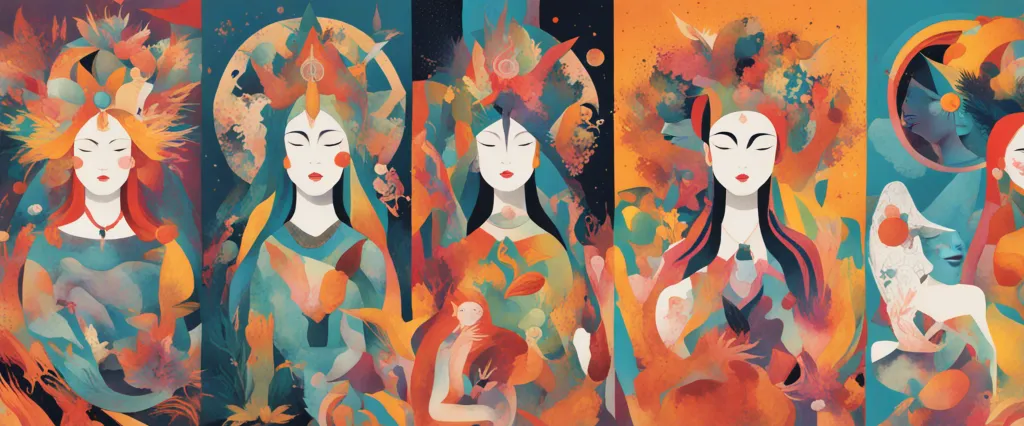
Chapter 8: Hestia: Self-Actualization and Self-Sacrifice
Chapter 8 of “Goddesses in Everywoman” by Jean Shinoda Bolen delves into the archetype of Hestia, the Greek goddess of hearth and home. Hestia represents the feminine archetype of self-actualization and self-sacrifice, embodying qualities such as devotion, inner peace, and rootedness.
According to Bolen, Hestia represents the archetype of self-actualization because she is a goddess who is fulfilled within herself. She is content in her own solitude and does not seek validation or recognition from others. Hestia encourages women to cultivate their inner fire, to find their own sacred space within themselves, and to honor their own desires and needs. By embracing Hestia’s archetype, women can tap into their true inner strength and wisdom.
However, Hestia also symbolizes self-sacrifice. She willingly relinquished her place on Mount Olympus to make room for Dionysus, showing her desire to maintain harmony and balance within the community. Similarly, women who embody the Hestia archetype often find themselves putting the needs of others before their own, prioritizing relationships and creating a nurturing environment for their loved ones.
Bolen emphasizes the importance of balancing self-actualization and self-sacrifice. Women need to find the balance between their inner fire and their devotion to others. By honoring the Hestia archetype, women can engage in self-care and self-expression, while also remaining connected to their communities and relationships.
In conclusion, Chapter 8 of “Goddesses in Everywoman” explores the Hestia archetype as a representation of self-actualization and self-sacrifice. It encourages women to find their inner peace, fulfill their own desires, and strike a balance between self-care and devotion to others.
After Reading
In conclusion, “Goddesses in Everywoman” by Jean Shinoda Bolen offers a fascinating exploration of the feminine archetypes through the lens of Greek mythology. The book provides an insightful analysis of the goddesses Athena, Artemis, Hestia, Demeter, Persephone, Aphrodite, Hera, and Hestia, highlighting their distinct characteristics and their relevance in modern women’s lives. By understanding these archetypes, readers are encouraged to recognize and embrace their personal strengths and challenges, leading to a more empowered and authentic self. Bolen’s blend of psychology and mythology creates a compelling narrative that provides valuable guidance and inspiration for women on their journey toward self-discovery and self-actualization. Overall, “Goddesses in Everywoman” is a compelling and empowering book that sheds light on the diverse aspects of femininity and encourages readers to embrace their own goddess within.
1. “Women Who Run with the Wolves: Myths and Stories of the Wild Woman Archetype” by Clarissa Pinkola Estés – Similar to “Goddesses in Everywoman,” this book explores the power of feminine archetypes through fairy tales, myths, and storytelling. Estés provides valuable insights and helps women connect with their wild, untamed inner selves.
2. “The Heroine’s Journey: Woman’s Quest for Wholeness” by Maureen Murdock – Drawing inspiration from Joseph Campbell’s concept of the hero’s journey, Murdock explores the unique journey of women to self-discovery. This book analyzes various stages of the heroine’s quest and how women can reclaim their own power, purpose, and wholeness.
3. “The Tao of Women: The Eternal Feminine” by Pamela Metz – This book delves into the teachings of Taoism and how they relate to the feminine experience. Metz explores the yin and yang aspects of being a woman and offers reflections on embracing both strength and sensitivity, balance and harmony in everyday life.
4. “The Dance of the Dissident Daughter: A Woman’s Journey from Christian Tradition to the Sacred Feminine” by Sue Monk Kidd – Inspired by her own spiritual journey, Kidd shares her transition from embracing traditional religious values to exploring the sacred feminine. This memoir-style book invites women to question societal expectations and embrace their own truth in a patriarchal world.
5. “Circle of Women: An Anthology of Contemporary Western Women Writers” edited by Tina Morrison – This collection of writings by various female authors explores the diverse experiences, struggles, and triumphs of women in modern society. Touching on themes of empowerment, identity, and self-discovery, this anthology celebrates the multifaceted nature of womanhood.
